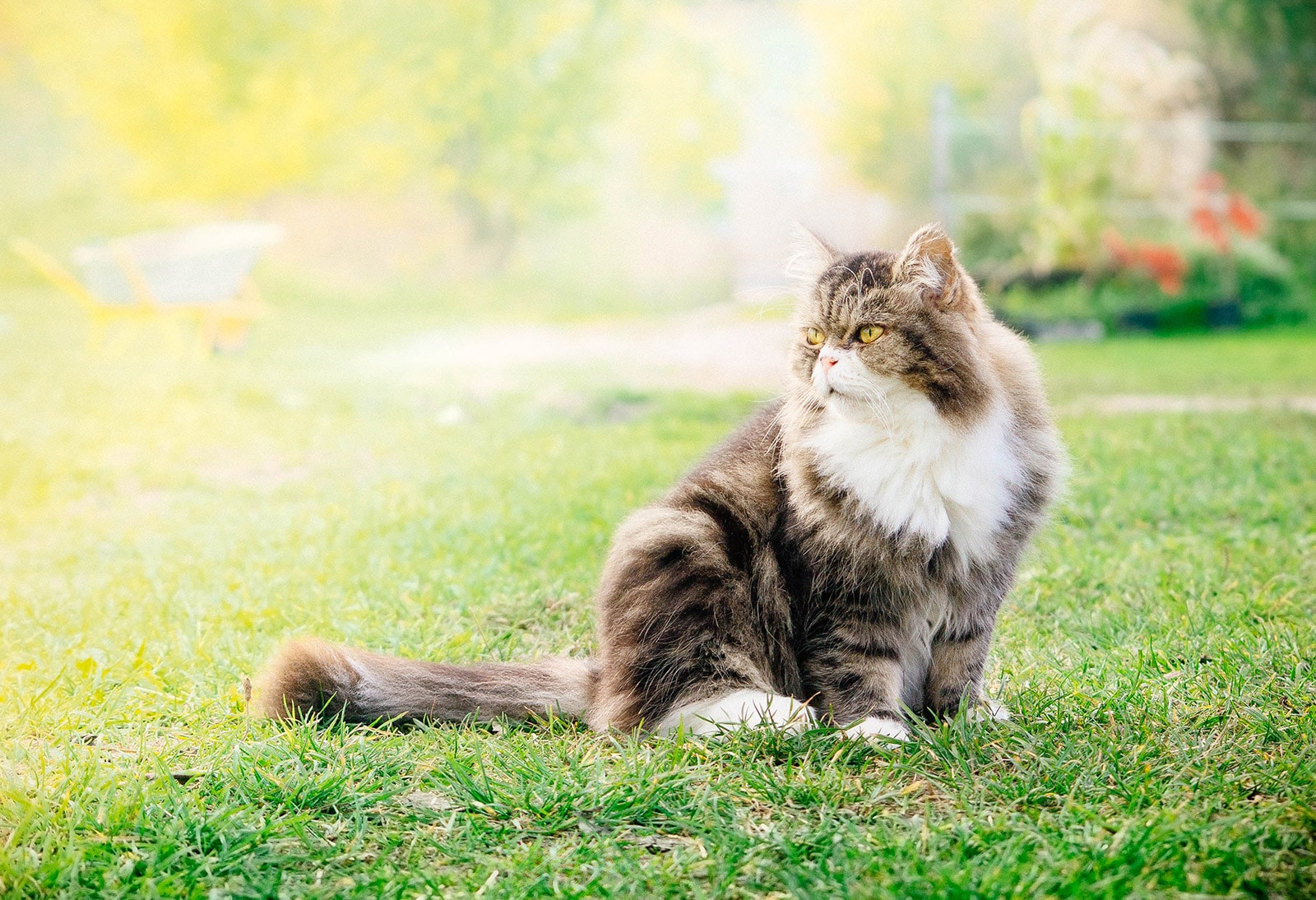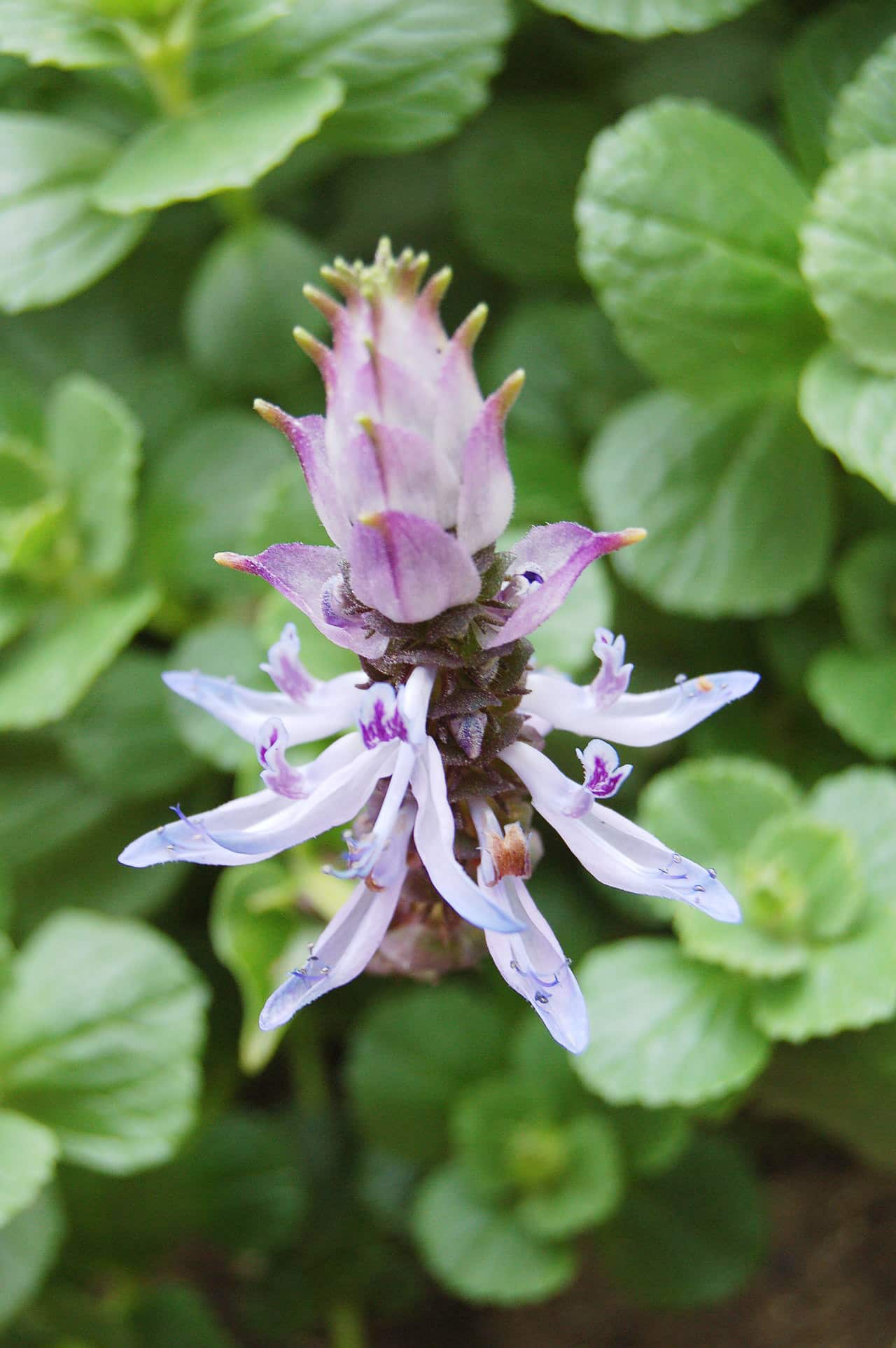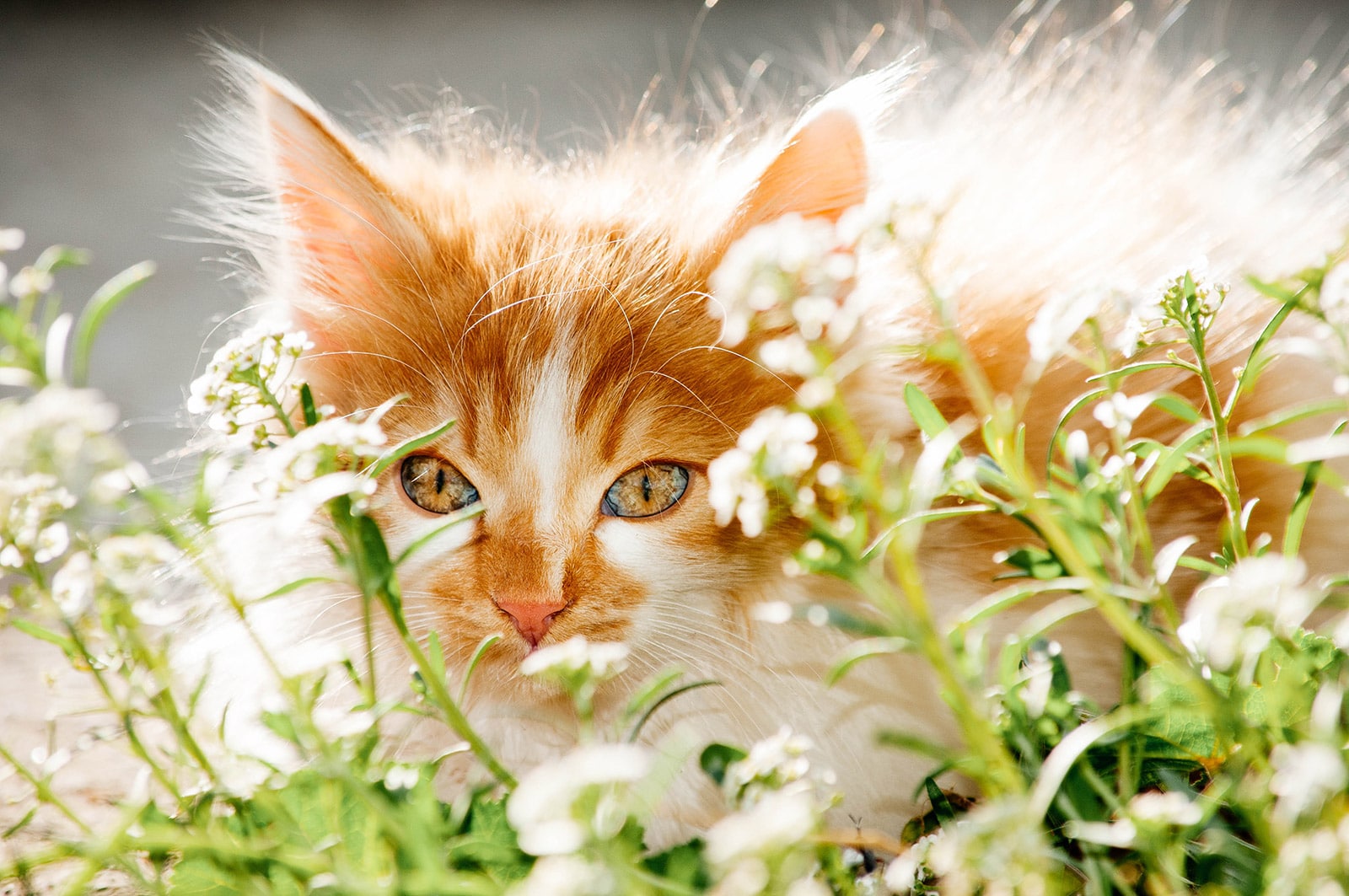There’s a friendly little cat who likes to visit my yard. She’s feral and has lived in the neighborhood (and on my property) before I ever moved here. On sunny days she can be found lounging in the grass, and sometimes I’ll see her running back and forth between the garden and the underside of an old deck, where I suspect she’s made herself at home.
None of this would be a problem, except this cat seems to have decided that my newly built raised beds are now her personal litter box. Recently I spotted kittens in the yard, and no amount of cute posturing can make up for their inconsiderate toilet habits, so I had to do something before my vegetable harvest was ruined.
I didn’t want to remove them from the yard entirely (after all, they do help keep the mice population in check), but I needed to keep them (and that foul cat poop) out of my garden beds.
If you’re in the same situation, here are a few ways to discourage cats from using your garden as a bathroom. They’re safe and humane, and will keep the cats away without harming them (or harming your plants).

The best natural deterrents to keep cats out of your garden
Alternate (decoy) cat toilet
Initially, creating a cat toilet probably seems the opposite of what you want to be doing. Surely this will only encourage more cats into the yard?
But rather than an open house, the idea is to create a contained area where cats will do their business without disturbing your plants. Choose an out-of-the-way spot in your yard, fill it with oh-so-tempting catnip, and add a sand-style litter box.
Does it work? It depends on your definition of “work.” Yes, it should keep cats from treating the entire garden as an extended litter box. But you do still have to clean the mess up, which means you’re now in charge of a pet you didn’t want in the first place.
For a large garden, a single litter box probably won’t do it. Still, it can work for a small space and is a good first step.
Citrus peel
Cats are supposedly turned away by the sharp smell of citrus peels, such as lemon, orange, and grapefruit. Toss the peels around your raised beds and plantings, and let the cat’s powerful sense of smell do the work.
Does it work? This is a natural deterrent that does keep cats back, but it only works if you stay on top of it. Citrus peels decompose and lose their potency fairly quickly, so they’ll need to be replaced frequently for ongoing deterrence.
It also isn’t the most attractive option if your garden tends to be neat and tidy, and you might end up with more critters in your yard that are drawn to the fruit peels.
Strong-smelling herbs
The idea behind this is similar to citrus peels. Kitty noses are very sensitive, and they hate being overwhelmed by pungent smells.
You can plant wildly fragrant herbs around your raised beds and most prized plantings, or grow them in containers so they’re portable and easily moved when you have a new cat problem.
Effective herbs to try include rosemary, thyme, mint, and lavender. So don’t be afraid to expand your herb garden (and even help the pollinators while you’re at it—bees and butterflies love to feed on the mint family).
Does it work? Yes, and these herbs become bonus harvests for you. While we humans revel in their fragrance, cats are repelled by them, so it’s a win-win.
In many climates you can grow these herbs as perennials (even the ones that die back in winter may come back the following spring), so most of the work is done in the beginning, with minimal maintenance needed each year as the herbs become more established and drought-tolerant.
Plant coleus canina
Otherwise known as the “scaredy cat plant,” Coleus canina (Coleus caninus or Plectranthus caninus) supposedly smells so bad that it keeps all cats away. This unusual but attractive flower (an herb in the mint family) is meant to smell like a skunk, and it only gets worse when it’s brushed against. So any cats going past on the way to the bathroom may decide to turn around.

Does it work? Whether it actually keeps cats away is up for debate, but if you’re desperate, it’s a viable option. Just be aware that it might repel dogs and even other people as well (so it’s probably not wise to plant near a deck or other area you frequently gather around).
Natural obstacles (pine cones, branches, etc.)
Cats like a nice and even ground when they go to the bathroom, so pine cones and branches are off-putting. Placed in and around your garden beds, cats can’t scratch at the soil surface and find themselves getting poked uncomfortably. It’s a better looking, natural alternative to the scat mat.
Does it work? Yes, though it does require some effort if you don’t have a lot of natural vegetation (like pine trees, shrubs, and other woody plants) to work with.
But if you have access to these materials, they make an excellent, long-lasting mulch for your garden beds in addition to being effective cat deterrents. In fact, one of my favorite ways to repurpose an old holiday garland or Christmas tree is to cut up the boughs and cover my beds with them in winter.
Related: 10 Clever Ideas for Repurposing an Old Christmas Tree
Rough ground or plastic fencing
As well as even ground, cats like bathrooms with firm, smooth surfaces. Plastic fencing or chicken wire around your garden beds creates a weird and uncomfortable surface, one that cats will avoid since they don’t like the feeling of mesh under their feet. They also try to stay away from gravel, and any areas covered in stone and pebble.
The type of plastic fencing I like to use is a UV-resistant hex netting like this one or a square mesh fence like this one. The flexible material is easy to cut and move around. With any leftover fencing, you can use it to create an effective barrier around saplings, seedlings, and delicate plants to protect against other critters as well.
Does it work? Yes, and it works as a good, long-term solution. Instead of using your fencing vertically, cut your fencing to size and lay it flat in your garden beds. The plants can grow up and around it, and the fence can be removed or rearranged when necessary.
For more defined beds, try lining the borders with pea gravel or coarse rocks (effectively creating a “moat” around your plants) or adding decorative elements like ceramic shards and shells on the soil to make the ground less hospitable to cats.

Disclosure: If you shop from my article or make a purchase through one of my links, I may receive commissions on some of the products I recommend.
More cat deterrents to consider
Go Away!

No, not just telling them off—I’ve found cats never quite grasp the concept of “no.” Rather, try using Go Away! Cat/Dog repellent. This spray features cinnamon oil and thyme oil to create a natural repellent for cats and other pests that go through the garden.
Does it work? It does, except when wind and rain comes. You’ll have to reapply often for best results, and it won’t work if you use sprinklers in the yard.
- Go Away! Rabbit, Dog & Cat Repellent Granules by Bonide effectively and naturally repel animals and deter them from forbidden areas in your yard, lawn and garden.
- Use this product as a training aid! While this product is an animal behavior modification tool, it may need to be supplemented with other behavior modification techniques to break domestic animals and pets of existing bad habits.
- Natural active ingredients are people and pet safe when used as directed. Cinnamon oil and Thyme oil act as a natural deterrent to keep cats, dogs and rabbits out your garden.
- Protect yard, lawn, garden, flowerbeds, trees and shrubs. Natural essential oils are biodegradable and will not harm desirable plants around your home.
- Go Away! Animal Repellent Granules arrive conveniently ready to use! The east-to-use dispenser cap allows you to evenly distribute pellets throughout your outdoor space to begin pest control.
Ultrasonic Noise Repellent

Ultrasonic repellents use a combination of unsettling noises and sounds to deter curious cats from crossing your garden.
Strategically placed, an ultrasonic repellent will sense when an animal is in the area. It then emits a high-pitched sound only audible to animals, and flashes a light. The cat gets spooked and goes elsewhere to do his business.
Does it work? Mostly, and many options are solar-powered, making them a convenient option that can go nearly anywhere. However, they can also be pricey, especially if you have a large garden and might need a few different noise repellents to keep animals out.
Motion Activated Sprinkler

Cats hate water, and a motion-activated sprinkler uses infrared technology to detect when cats are nearby and sprays them with water.
You may have even considered (like me after some particularly frustrating clean-ups) getting a super soaker and squirting the animals yourself.
This option is easier and doesn’t require you to stand guard over your garden!
Does it work? Usually, but again it depends on how fearless the cats are. No one wants to blast a cat with water, so all sprinkler solutions offer a fairly weak stream.
Small cats may be able to slip by unnoticed as well, especially with a poor-quality sprinkler that has weaker motion sensors.
The other issue is absent-minded gardeners may find themselves getting sprayed regularly. Garden motion sensors aren’t quite sophisticated enough to tell the difference between a cat, a deer, or a human, so they will spray indiscriminately. You’ll have to remember to turn yours off when appropriate.
- ULTIMATE YARD PROTECTION - Defend your yard with our powerful motion-activated sprinkler that deters animals and pests effectively.
- SENSOR-ACTIVATED YARD SECURITY SPRINKLER - The heat and motion-activated sensor detects movement up to 40 feet away, triggering a burst of water to keep unwanted visitors away.
- DUAL-PURPOSE SPRINKLER - Our motion-activated sprinkler not only repels animals but also allows you to add additional sprinklers to the enforced area for complete coverage.
- ANIMAL REPELLENT OUTDOOR - Say goodbye to expensive fences and inconvenient netting. Our motion-activated sprinkler provides a safe and humane method to keep deer, cats, and more away from your garden.
- TIMED WATERING FEATURE - Besides deterring animals, our sprinkler also features a timed watering function, allowing you to conveniently water your garden for 30 minutes at a time.
Methods to avoid
There are a few things that shouldn’t be done to keep cats away. These methods may be dangerous for the animals or bad for the garden, so try to avoid using them.
Mothballs and coffee grounds
Both of these are often suggested as natural methods of cat deterrence, and they absolutely should not be used.
Mothballs contain pesticides, and are toxic to all kinds of animals, insects, and humans. They shouldn’t be in your homes, let alone loose around the garden where they can be ingested or inhaled by wildlife.
Coffee grounds contain caffeine, and are dangerous for both cats and dogs. While a lick or two probably won’t cause any adverse affects, it’s not uncommon for cats to accidentally or intentionally ingest a few spoonfuls of coffee grounds left in the garden.
Do not scatter coffee grounds on your soil. Instead, throw your coffee grounds in the compost pile.
Plastic forks, scat mats, and spikes
Plastic forks is one of those DIY solutions that perhaps hasn’t been well thought through. You might have seen pictures on Pinterest of plastic forks sticking out of the ground and been intrigued, but this method isn’t recommended.
For one, it looks tacky. Single-use plastics also aren’t very environmentally friendly, and they degrade quickly when exposed to the elements, leaving you with brittle plastic forks that end up cracking, splitting, and littering tiny bits of plastic all over the soil. Don’t do it.
Scat mats and spikes are meant to discourage cats from walking in certain areas, but they look awful in a garden and give very little space between them to grow anything. Particularly bold cats never seem too bothered by them anyway.

My thoughts
So what’s the best way to deter a cat humanely and effectively, while saving your garden beds at the same time?
My vote is for making the garden as uncomfortable as possible for the cat. Fill it with coarse mulch (which benefits your plants as well), or lay plastic fencing or chicken wire flat on the ground around your plants to make it difficult for a cat to scratch at the soil.
After a few failed attempts, that cat may look elsewhere to do its business—and your weekends can be spent tending to your flowers and vegetables, and not pulling another turd out of the garden.
View the Web Story on how to keep cats out of your garden.


















